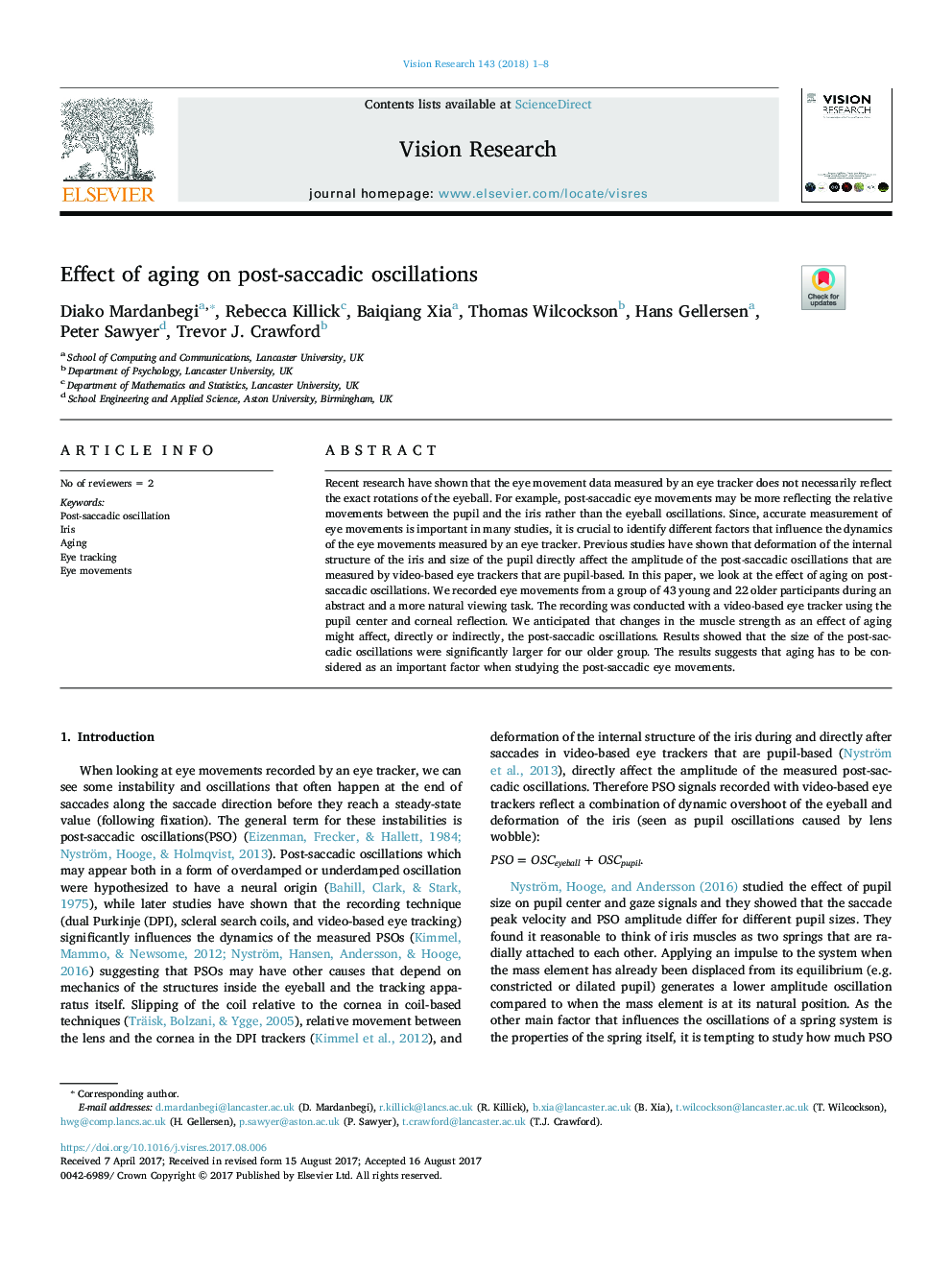| Article ID | Journal | Published Year | Pages | File Type |
|---|---|---|---|---|
| 8795322 | Vision Research | 2018 | 8 Pages |
Abstract
Recent research have shown that the eye movement data measured by an eye tracker does not necessarily reflect the exact rotations of the eyeball. For example, post-saccadic eye movements may be more reflecting the relative movements between the pupil and the iris rather than the eyeball oscillations. Since, accurate measurement of eye movements is important in many studies, it is crucial to identify different factors that influence the dynamics of the eye movements measured by an eye tracker. Previous studies have shown that deformation of the internal structure of the iris and size of the pupil directly affect the amplitude of the post-saccadic oscillations that are measured by video-based eye trackers that are pupil-based. In this paper, we look at the effect of aging on post-saccadic oscillations. We recorded eye movements from a group of 43 young and 22 older participants during an abstract and a more natural viewing task. The recording was conducted with a video-based eye tracker using the pupil center and corneal reflection. We anticipated that changes in the muscle strength as an effect of aging might affect, directly or indirectly, the post-saccadic oscillations. Results showed that the size of the post-saccadic oscillations were significantly larger for our older group. The results suggests that aging has to be considered as an important factor when studying the post-saccadic eye movements.
Keywords
Related Topics
Life Sciences
Neuroscience
Sensory Systems
Authors
Diako Mardanbegi, Rebecca Killick, Baiqiang Xia, Thomas Wilcockson, Hans Gellersen, Peter Sawyer, Trevor J. Crawford,
